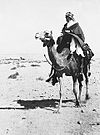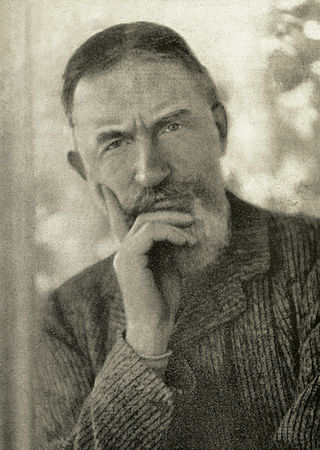
George Bernard Shaw, known at his insistence as Bernard Shaw, was an Irish playwright, critic, polemicist and political activist. His influence on Western theatre, culture and politics extended from the 1880s to his death and beyond. He wrote more than sixty plays, including major works such as Man and Superman (1902), Pygmalion (1913) and Saint Joan (1923). With a range incorporating both contemporary satire and historical allegory, Shaw became the leading dramatist of his generation, and in 1925 was awarded the Nobel Prize in Literature.

It's That Man Again was a BBC radio comedy programme which ran for twelve series from 1939 to 1949. The shows featured Tommy Handley in the central role, a fast-talking figure, around whom the other characters orbited. The programmes were written by Ted Kavanagh and produced by Francis Worsley. Handley died during the twelfth series, the remaining programmes of which were immediately cancelled: ITMA could not work without him, and no further series were commissioned.

Fiona Shaw is an Irish film and theatre actress. Known for extensive work with the Royal Shakespeare Company and the National Theatre, as well as in film and television, in 2020, she was listed at No. 29 on The Irish Times list of Ireland's greatest film actors. She was made an Honorary Commander of the Order of the British Empire (CBE) by Queen Elizabeth II in 2001.

Man and Superman is a four-act drama written by George Bernard Shaw in 1903. The series was written in response to a call for Shaw to write a play based on the Don Juan theme. Man and Superman opened at the Royal Court Theatre in London on 21 May 1905 as a four-act play produced by the Stage Society, and then by John Eugene Vedrenne and Harley Granville-Barker on 23 May, without Act III. A part of the third act, Don Juan in Hell, was performed when the drama was staged on 4 June 1907 at the Royal Court. The play was not performed in its entirety until 1915, when the Travelling Repertory Company played it at the Lyceum Theatre, Edinburgh.

Martita Edith Hunt was an Argentine-born British theatre and film actress. She had a dominant stage presence and played a wide range of powerful characters. She is best remembered for her performance as Miss Havisham in David Lean's Great Expectations.
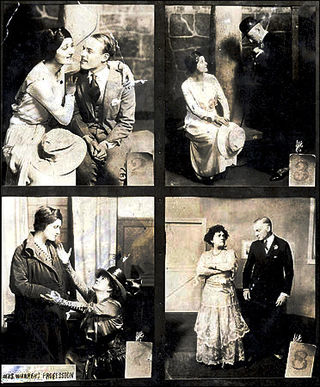
Mrs. Warren's Profession is a play written by George Bernard Shaw in 1893, and first performed in London in 1902. It is one of the three plays Shaw published as Plays Unpleasant in 1898, alongside The Philanderer and Widowers' Houses. The play is about a former prostitute, now a madam, who attempts to come to terms with her disapproving daughter. It is a problem play, offering social commentary to illustrate the idea that the act of prostitution was not caused by moral failure but by economic necessity. Elements of the play were borrowed from Shaw's 1882 novel Cashel Byron's Profession, about a man who becomes a boxer due to limited employment opportunities.
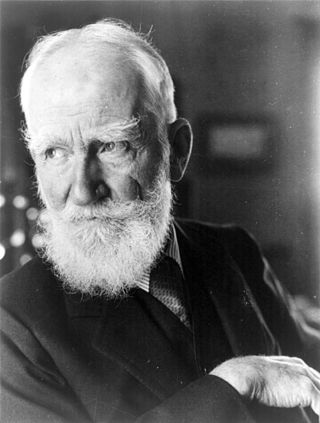
Back to Methuselah (A Metabiological Pentateuch) by George Bernard Shaw consists of a preface (The Infidel Half Century) and a series of five plays: In the Beginning: B.C. 4004 (In the Garden of Eden), The Gospel of the Brothers Barnabas: Present Day, The Thing Happens: A.D. 2170, Tragedy of an Elderly Gentleman: A.D. 3000, and As Far as Thought Can Reach: A.D. 31,920.

The Philanderer is a play by George Bernard Shaw.

The Doctor's Dilemma is a play by George Bernard Shaw first staged in 1906. It was published in 1909. It is a problem play about the moral dilemmas created by limited medical resources, and the conflicts between the demands of private medicine as a business and a vocation.
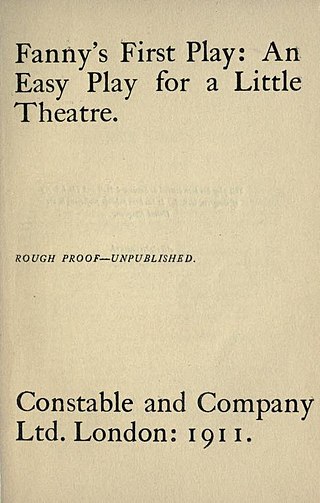
Fanny's First Play is a 1911 play by George Bernard Shaw. It was first performed as an anonymous piece, the authorship of which was to be kept secret. However, critics soon recognised it as the work of Shaw. It opened at the Little Theatre in the Adelphi in London on 19 April 1911 and ran for 622 performances. The mystery over the authorship helped to publicise it. It had the longest run of any of Shaw's plays. A second production opened on Broadway on September 16, 1912 for 256 performances. The play toured the provinces in England in the same year.
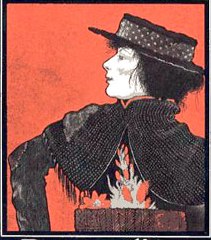
Pygmalion is a play by Irish playwright George Bernard Shaw, named after the Greek mythological figure. It premièred at the Hofburg Theatre in Vienna on 16 October 1913 and was first presented on stage in German. Its English-language première took place at His Majesty's Theatre in London's West End in April 1914 and starred Herbert Beerbohm Tree as phonetics professor Henry Higgins and Mrs Patrick Campbell as Cockney flower-girl Eliza Doolittle.

Ernest Cossart was an English-American actor. After a stage career in England, he moved to the US, appearing on Broadway and all around the country. In the 1930s and 1940s, he appeared in films, specializing in playing butlers, valets, and similar roles, but playing a range of other parts.
Albert Marre was an American stage director and producer. He directed the stage musical Man of La Mancha in 1965, for which he won the Tony Award for Best Director of a Musical.
The Shaw Festival is a major Canadian theatre festival in Niagara-on-the-Lake, Ontario, the second largest repertory theatre company in North America. Founded in 1962, its original mandate was to stimulate interest in George Bernard Shaw and his period, and to advance the development of theatre arts in Canada.

In Good King Charles's Golden Days is a play by George Bernard Shaw, subtitled A True History that Never Happened.

Dorothy Minto was a prominent actress on the London stage between 1905 and the mid-1930s, notably appearing in the first runs of several plays written by George Bernard Shaw. She also featured in a small number of films between 1916 and 1936. While her early stage career concentrated on classical plays and serious new work, from 1912 onwards she devoted herself more to musicals and comedies.

Village Wooing, A Comedietta for Two Voices is a play by George Bernard Shaw, written in 1933 and first performed in 1934. It has only two characters, hence the subtitle "a comedietta for two voices". The first scene takes place aboard a liner, and the second in a village shop. The characters are known only as "A" and "Z".

Jitta's Atonement (1923) is an adaptation by George Bernard Shaw of the play Frau Gitta's Sühne by Siegfried Trebitsch. It is about a woman who has to atone to her husband for having an affair with his best friend. The atonement of both Jitta and other characters take unexpected forms. Shaw dramatically rewrote the last part of the play, giving it a more characteristically Shavian tone.

The Inca of Perusalem, An Almost Historical Comedietta (1915) is a comic one-act play written during World War I by George Bernard Shaw. The plot appears at first to be a fairy-tale like story about a fantastical "Inca", but it eventually becomes obvious that the Inca is Kaiser Wilhelm II of Germany.

Press Cuttings (1909), subtitled A Topical Sketch Compiled from the Editorial and Correspondence Columns of the Daily Papers, is a play by George Bernard Shaw. It is a farcical comedy about the suffragettes' campaign for votes for women in Britain. The play is a departure from Shaw's earlier Ibsenesque dramas on social issues. Shaw's own pro-feminist views are never articulated by characters in the play, but instead it ridicules the arguments of the anti-suffrage campaigners.













